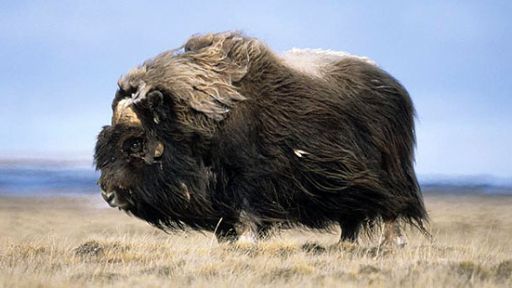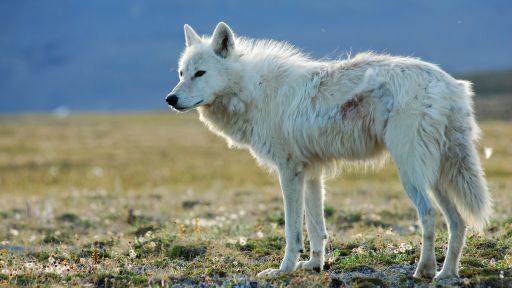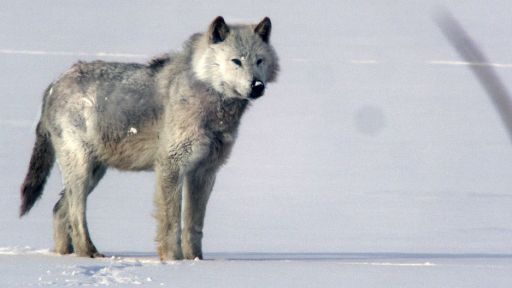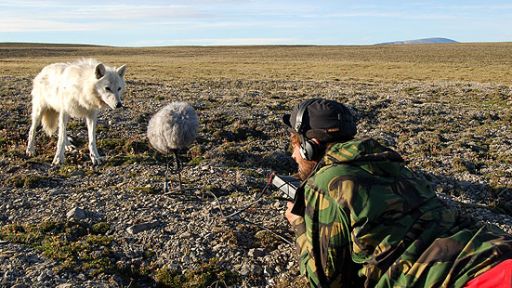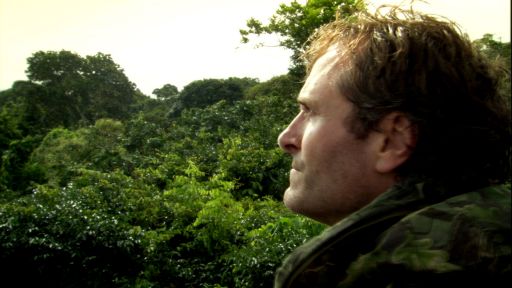As the wolves were still away hunting – it had been 72 hours now – cameraman Mark was eager to capture the other bits of footage which will make up the whole story and so went off to the beach to see what he could find.
He came back with some great “sequences” [these I’ve learned are a variety of shots such as close-up, mid-shot (half person), cut-away (not sure about this one) and general views; all put together to make sense] of melting ice pans, eider ducks, drifting sea ice and other birdlife such as snow geese and squaw ducks.
The amazing thing about most of the wildlife around here is that they are so tame. I guess because they hardly ever see human beings they don’t recognise us as a threat.
I remember one winter expedition when hauling all our equipment up a very steep gully and half way up team medic Fizzy shouted to me from below. I looked up puzzled as to what she was calling about but soon realised that I had company. Not one metre away from me, an Arctic hare had come to say hello.
I felt as though I could reach out and stroke it but instead I just bid him good day and he passed through, totally un-fussed.
Arctic hares are beautifully white with the very tips of their ears jet black and really quite large; about the size of the largest pet rabbit you might think of and often larger than the Arctic fox; although the fox does prey on hares.
They’re pretty barmy too. Mark managed to film some in the low sun, late at night, hopping, boxing, jumping and spinning around as if the ground had suddenly turned red hot.
What’s perhaps most comical is when they stand up on their hind legs looking around and then hop off kangaroo-like.
He also managed to find leverets (young hares) which are light grey-brown like our own pet rabbits.
Apart from size and a few antics, hares are quite different from rabbits in that they give birth to their young out in the open and as soon as they are born they can see, have fur and can jump around within hours.
Rabbits on the other hand are born blind, naked and quite helpless and therefore need the protection of a cosy warm warren. This is probably why there aren’t any up here in the Arctic – they’d have problems burrowing into the permafrost!

